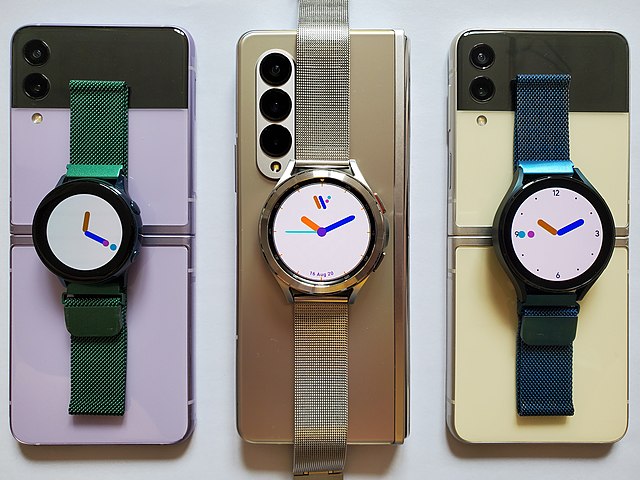Inductive charging is a type of wireless power transfer. It uses electromagnetic induction to provide electricity to portable devices. Inductive charging is also used in vehicles, power tools, electric toothbrushes, and medical devices. The portable equipment can be placed near a charging station or inductive pad without needing to be precisely aligned or make electrical contact with a dock or plug.
Charging with induction (left image) creates more waste heat than using a cable (right image).
Wireless charging station
Detail of the wireless inductive charging device
Samsung Galaxy Z foldable smartphones have "Wireless PowerShare" technology.
Wireless power transfer (WPT), wireless power transmission, wireless energy transmission (WET), or electromagnetic power transfer is the transmission of electrical energy without wires as a physical link. In a wireless power transmission system, an electrically powered transmitter device generates a time-varying electromagnetic field that transmits power across space to a receiver device; the receiver device extracts power from the field and supplies it to an electrical load. The technology of wireless power transmission can eliminate the use of the wires and batteries, thereby increasing the mobility, convenience, and safety of an electronic device for all users. Wireless power transfer is useful to power electrical devices where interconnecting wires are inconvenient, hazardous, or are not possible.

Inductive charging pad for a smartphone as an example of near-field wireless transfer. When the phone is set on the pad, a coil in the pad creates a magnetic field which induces a current in another coil, in the phone, charging its battery.
Prototype inductive electric car charging system at 2011 Tokyo Auto Show
Powermat inductive charging spots in a coffee shop. Customers can set their phones and computers on them to recharge.
Wireless powered access card.







